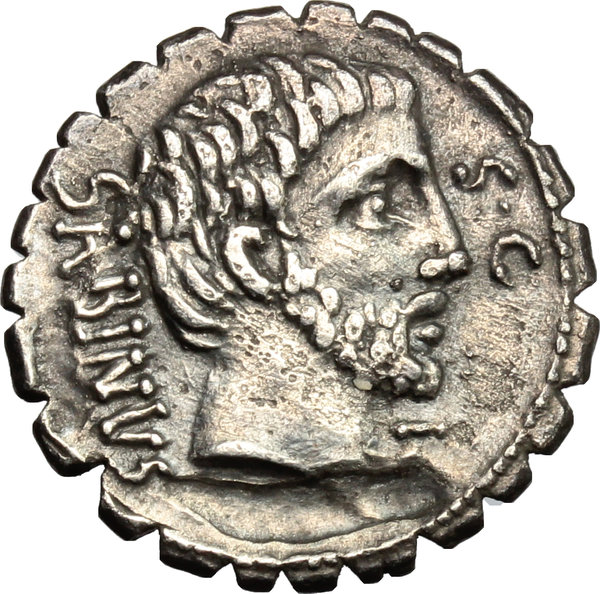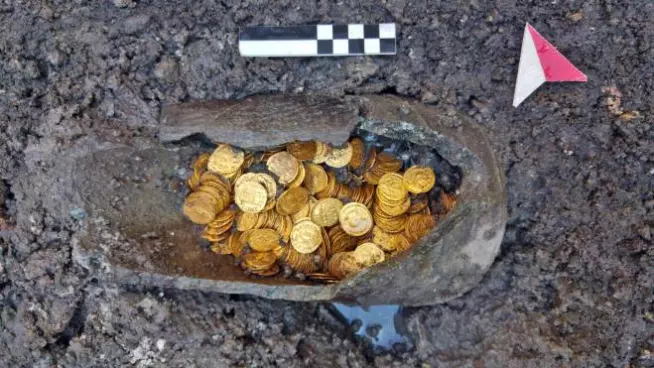Another problem concerning the “good” money is its disappearance from circulation in private hoards. This usually happened for gold and silver coins. Let us consider some recent examples, one from Italy. The Italian Republic coined some silver coins with a face value of 500 Lire, from 1958 till 1967. They were quite beautiful coins in three series, named “Caravelle”, “Unità d'Italia” and “Dante”. In 1966, Italy started to issue a banknote with the face value of 500 Lire too. The government stopped the coinage of silver coins after 1967, because of two facts. One was the cost of silver, and the other the phenomenon of “tesaurizzazione”. That is, these silver coins were collected into private hoards, disappearing from circulation. This episode is in agreement with the Gresham’s Law: people used “bad” money, the banknotes, in daily transactions instead of “good” money, the silver coins which were collected in hoards.
Silver coins circulated in Canada (until 1968) and in the United States (until 1964 for dimes and quarters and until 1969 for half-dollars). These countries debased their coins, as the market value of silver rose above that of the face value [4], and the silver coins disappeared from circulation as citizens retained them, using the newer coins in daily transactions. Moreover, some individuals were motivated to melt them down and sell the metal for its higher intrinsic value. The 1965 United States half-dollar coins contained 40% silver; in previous years, these coins were 90% silver. “With the release of the 1965 half-dollar, which was legally required to be accepted at the same value as the earlier 90% halves, the older 90% silver coinage quickly disappeared from circulation, while the newer debased coins remained in use. As the price of bullion silver continued to rise above the face value of the coins, many of the older half dollars were melted down. Beginning in 1971, the U.S. government gave up on including any silver in the half dollars, as even the metal value of the 40% silver coins began to exceed their face value” [4].
Hoxne Hoard: Display case at the British Museum showing a reconstruction of the arrangement of the hoard treasure when excavated in 1992. Courtesy: Mike Peel (www.mikepeel.net).
Private hoards are an ancient phenomenon, as archaeology is often demonstrating. It happens that hoards, usually created with the intention of later recovery by the hoarder, survive and are uncovered in particular by the metal detector hobbyists. In fact, hoards provide a useful method to science for dating artifacts and are considered an indicator of the relative degree of unrest in ancient societies, becoming a snapshot of the period of time during which they have been created [13]. One of the most famous hoards of Roman gold and silver coins was found in the village of Hoxne in Suffolk, England, in 1992. The coins of the hoard date it after AD 407, which coincides with the end of Britain as a Roman province [14].
About the ancient hoards, we can consider what Reference [15] is telling too. If they hadn't have been lost for several reasons, probably they would have been put back into circulation and the coins would have ended up at the mint. It is therefore quite probable that “most silver ultimately found its way back to the mint”.
About the ancient hoards, we can consider what Reference [15] is telling too. If they hadn't have been lost for several reasons, probably they would have been put back into circulation and the coins would have ended up at the mint. It is therefore quite probable that “most silver ultimately found its way back to the mint”.
Questa è una 500 Lire "Caravelle". Si ringrazia il sito
https://www.nauticareport.it per l'immagine.
Leggete l'articolo in Le Caravelle con le bandiere controvento
Che vocabolo splendido dobbiamo al Latino
RES PUBLICA















